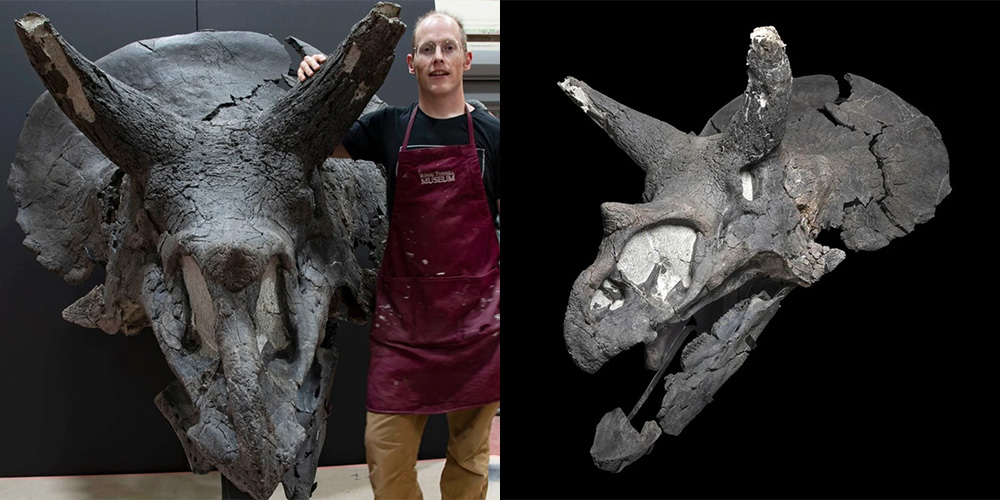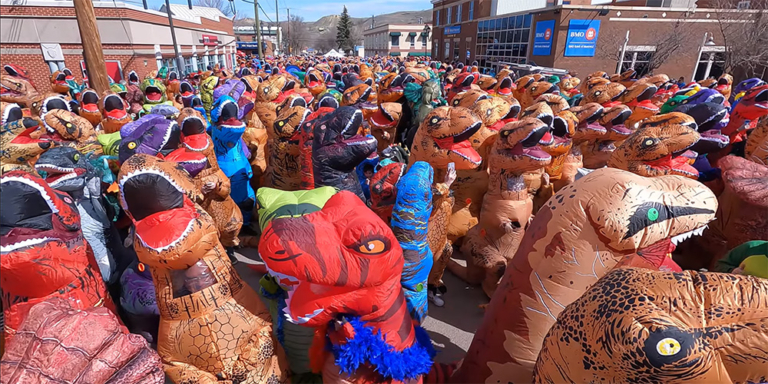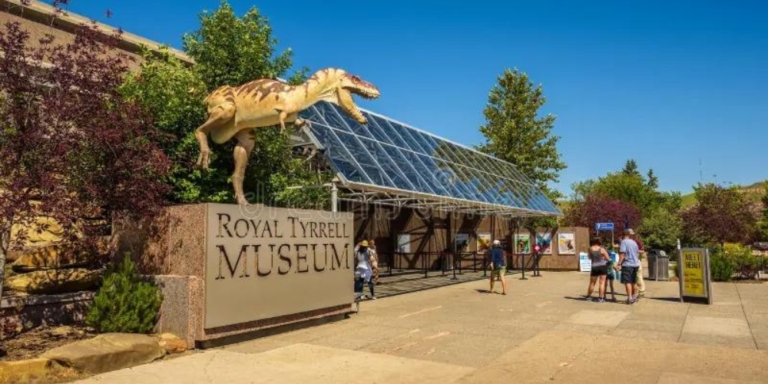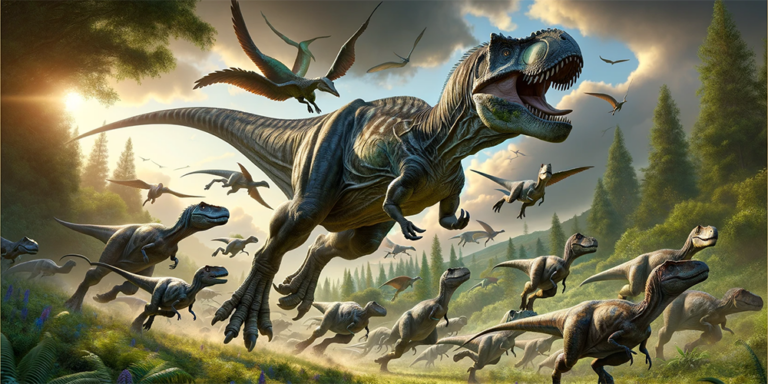The Royal Tyrrell Museum in Drumheller has recently unveiled a remarkable exhibit that was years in the making.
Visitors can now marvel at ‘Calli,’ the most complete triceratops skull ever discovered in Canada.
This fossilized relic, which is at least 68 million years ago, offers a glimpse into a time when these majestic creatures roamed the foothills of southwest Alberta.
The triceratops, for those unfamiliar, was a plant-eating dinosaur known for its three distinct horns and a large bony frill that extended from the back of its skull.
These creatures were roughly the size of an elephant, with a robust body and a beak-like mouth. Their distinctive horns and frill made them one of the most recognizable dinosaurs and served as a defence mechanism against predators.


Dr. Caleb Brown, the museum’s curator of dinosaur systematics and evolution, expressed his excitement about adding Calli to their collection.
He noted that while triceratops fossils are relatively common in the US, they are rare in Canada, especially in Alberta.
“The Royal Tyrrell Museum boasts one of the world’s most impressive fossil collections. Yet, until Calli’s discovery, we lacked an original triceratops skull. Now, we have not just any triceratops but the best-preserved specimen from Canada,” Dr. Brown remarked.
The journey to bring Calli to the museum was no small feat.
The fossil was first unearthed in 2014 near Callum Creek’s shoreline, a tributary of the Oldman River, during flood mitigation work. After the 2013 floods, an effort to assess potential damage to archaeological sites led to the find.
The triceratops was aptly named after the creek where it was found.
Given the fossil’s immense size and weight, it was extracted in blocks, some of which were airlifted to Drumheller via helicopter.
Over the next seven years, museum technicians, led by Ian Macdonald, dedicated over 6,500 hours to preparing the fossil for display.
The technicians meticulously separated rock from bone using air sprags or tiny air-powered jackhammers, removing 815 kilograms of hard rock to reveal the magnificent skull.
Macdonald described the process as intricate, given the skull’s complex structure. “A triceratops skull is gnarly and bumpy. I had to work on each bump, pit, and groove a millimetre at a time,” he explained.
One of Calli’s standout features is its size, with the skull measuring an impressive six feet in length and five feet in width.


Its fragility required a custom metal armature forged by blacksmiths in Strathmore to support it.
Another intriguing aspect is its shiny black hue, a result of the unique geology of southwest Alberta. This coloration is reminiscent of Black Beauty, the museum’s Tyrannosaurus rex fossil, which was found in the same region.
Calli is set to be the star of the ‘Fossils in Focus’ exhibit, showcasing the museum’s latest and most thrilling specimens.
While Calli takes center stage, Dr. Brown emphasized that other specimens, like the horned dinosaur Pachyrhinosaurus and a crocodile skull, are equally deserving of attention.
Dr. Brown hopes that Calli serves as a testament to Alberta’s rich paleontological history.
“Alberta is a treasure trove of paleontological resources. The Royal Tyrrell Museum aims to protect, collect, research, and present these wonders. Calli is a testament to the incredible fossils Alberta possesses, something all Albertans can cherish and take pride in,” he said.






